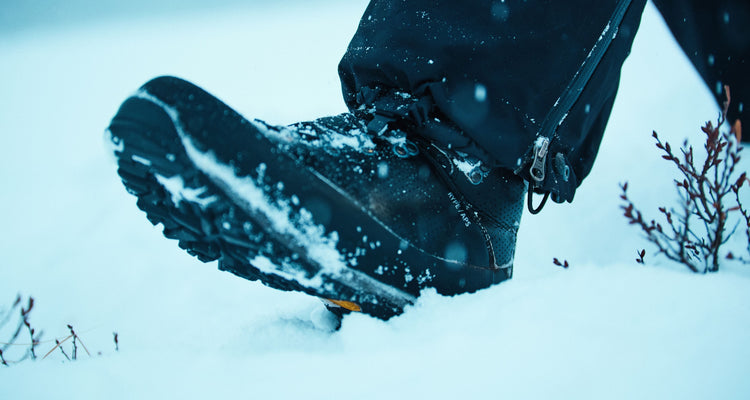Dry feet are happy feet - 5 tips to keep you warm

Here are some things you may want to consider to keep your feet dry, warm and happy:
GORE-TEX
GORE-TEX is a membrane that transports moisture away from the foot while keeping moisture out. Dry feet retain their warmth more than damp or sweaty feet because moisture wicks heat away from the foot. A shoe that breathes will therefore prevent you from getting those sticky, cold feet. Almost all ALFA shoes come with GORE-TEX, so you're bound to find a favourite. Learn more about how GORE-TEX works.
NATURAL MATERIALS
A shoe built with appropriate natural materials like leather and nubuck will be moisture-wicking, keeping your feet dry all day. This is one of the criteria for keeping your feet warm. The combination of GORE-TEX and natural materials will be particularly suitable on cold days.
INSULATION AGAINST THE GROUND
The direct cold from the ground can have an additional cooling effect on your feet. It is therefore important that the sole construction consists of insulating natural materials that insulate against the cold from the ground and at the same time do not conduct heat away from the foot. So when looking at footwear for winter, make sure the sole is insulated. Most of ALFA's shoes have natural materials that insulate very well against the cold from the ground.
Shoes of the right size should be roomy enough to have a small, insulating layer of air between the foot and the shoe. This is important to keep your feet warm, so make sure you don't buy shoes that are too small. In winter, it can be an advantage to have slightly wider shoes than in summer. This will also make it easier to fit a thicker sock. Find out more about finding the right shoe here.
- 5 TIPS TO KEEP YOUR FEET WARM
Of course, there are many aspects that affect whether you have cold feet. Some of these are genetic, but there's also a lot you can do yourself.
- Wear proper socks
We recommend a technical wool sock. Wool keeps you warm well, but mixing in technical materials will increase both moisture wicking and durability. Cotton socks should be banned from hiking or ski boots! Especially on cold days, or if your legs get very cold, it may be a good idea to use a thin wool sock on the inside and a thicker wool sock on the outside. Try out a combination that suits you.
- Use insoles
If you are particularly sensitive to the cold, technical aids such as heating insoles or socks can be a good option on really cold days. However, bear in mind that feet that are too warm can produce more sweat and become wet and cold over time.
- Be active
Good circulation also keeps your feet warm, so make sure you don't stand still for too long at a time. If you must stand still, our best tip is to "wiggle" your toes inside your shoe regularly. This will ensure that blood flows into your toes even if you're not moving. It can also help to stand on an insulating surface such as Styrofoam if you are not able to move very much.
- Ventilate
Even in winter, it can be beneficial to open your shoes a little to ventilate. You can do this quickly during a break. It is better to ventilate the whole shoe quickly instead of sitting with the laces open for a long time. This way you can exchange air without cooling the inside of the shoe itself.
- Wear covers
If you have shoes that aren't adapted to the cold you'll be out in, don't have room for several pairs of socks or have to stand still for long periods, wear a pair of oversized coverboots on the outside of your shoe. This insulates against the cold from the ground and creates an insulating layer of air between the cover and the shoe. With cover boots, even less warm boots can be worn in winter.



